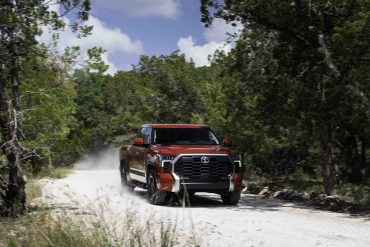There comes a time in every teen’s life when the urge to get behind the wheel is too intense to ignore. Unfortunately, their enthusiasm can lead them to make silly mistakes and put themselves and others in harm’s way. Sixteen-year-olds have the highest crash rate of drivers of any other age, which is bone-tingling for parents to read. Sure, you can do everything in your power to try and teach them responsibility, yet it often goes in one ear and out the other.
As always, the best option for teens is to teach them a lesson without preaching. Penetrating their subconscious will make them safer motorists and you won’t have to worry about them going off the rails. The trick is to set the best possible example as a driver whether they want to learn now or further down the road.
Here are some tips to keep in mind that will help you get into their head without them knowing it.
LET THE ROAD RAGE PASS
The moment someone cuts you up, you want to get on the horn and scream obscenities. It’s not as if you’re an anger-fueled person who likes to fly off the handle at any opportunity; you’re worried about safety. Still, the kids can’t read your mind and they think you’re angry and annoyed and they see it as acceptable behavior.
When teens are behind the wheel, they’ll copy the same codes and conducts they see from their parents which means they’ll likely suffer from road rage too. Aside from encouraging violence, it increases the risk of an accident because anger clouds your decision making. For you to do it is one thing, but to promote this in your kids is a horrifying thought so you should try and bottle up your emotions.
LOSE THE CELL PHONE
56% of teens admit they talk on the phone while driving, and it’s learned behavior. Again, if they see you do it, they’ll assume it’s acceptable. Even if it’s against the law, the thinking is that it can’t be too dangerous if their parents commit the crime.
Of course, talking on the phone or using a cell while behind the wheel is a huge risk as it reduces focus and reaction times. The best course of action is to leave it behind and not carry one with you while you’re driving. After all, glancing at it or using it as a satellite navigation system is a bad habit you don’t want them to learn.
If you do have it on you and it rings, be sure to make a point of safely pulling over before answering. And phones aren’t the only distractions to watch for. Try and set a good example by removing all the potentially harmful gadgets, from the sat nav to parking sensors. Remember: you don’t want them to rely on technology.
BE PROPER
For how many years have you been driving? The answers will range from eighteen months to twenty-five years yet the fact remains motorists get complacent. Sure, you haven’t had a crash yet that doesn’t mean you don’t do stupid and dangerous things.
A perfect example is the safety belt. Lots of drivers don’ wear it if they are going a short distance because they think it isn’t necessary. Another one to watch out for is the use of the mirrors. Plenty of experienced motorists only check one mirror or don’t check any before pulling out into the road. Yes, you feel comfortable doing this because you’ve driven for years, but the same isn’t true of your teenage learner.
To make sure they are as safe as possible in the driver’s seat, you should be as proper as possible. That means doing the above as well as setting your mirrors and checking tire pressures before the journey.
USE SAFE ROUTES
Once a learner passes, they can’t wait to drive on their own. After all, the independence boost they get is massive and it’s good for them as young adults. Still, they won’t go far because the novelty of just driving a car is incredible. Going to the local supermarket is enough to blow their mind, and you should take advantage of this.
Using the safest possible routes when you’re in the car will drill directions into their head and they’ll likely follow your example. So, even when you’re not there, you’re there in spirit guiding them along your preferred path! Pick routes with less traffic and good lighting and avoid highways and freeways at all costs even if it takes longer.
REACT APPROPIRATELY
Parents hate to hear this but you know it’s true: accidents are inevitable. Your teen driver can do all the right things and end up in a collision that wasn’t their fault. As a result, they need to be prepared to take action if the worst happens and they’ll rely on their memory banks.
If you get the car, swap insurance details and take pictures of the damage, they’ll do the same. If you call the police and give a statement, they will too. And if you use competent personal injury lawyers for hire because you feel you deserve compensation, well you already know the answer. Other than that, always be available in case they need to call and ask for your advice.
DON’T BE CRITICAL
There will be times when you’re in the car together and they’re driving, and you’ll want to comment on everything. It’s an occupational hazard of being a parent. Unless it’s crucial, lay off the criticism because it can impact their confidence and might make them not want to drive.
This is the last thing you want so try and accept that people have different styles and theirs isn’t necessarily wrong. As long as they are safe, that’s the main thing. If you can’t help yourself, try and be as welcoming and constructive about it as possible to avoid an argument.
How do you lead from the front concerning your teenage drivers?
Photo Credit: Newspress


